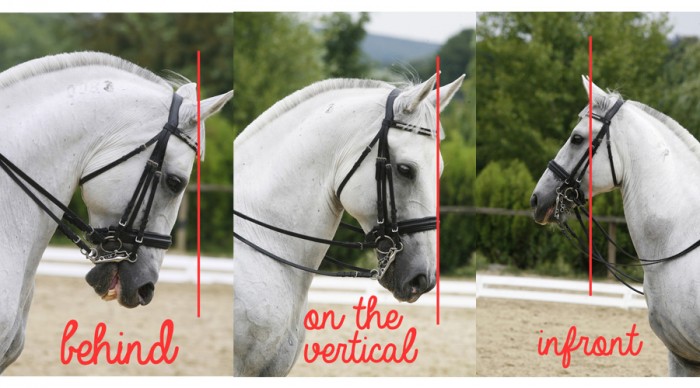
Head positions in elite dressage horses.
The FEI has rules concerning the position of the head and neck during dressage competitions, and can lead to lowered scores. However, among veterinarians there is growing interest if the position of the horse's neck can lead to complex locomotor disturbances. This article aims to investigate whether the head angulation of elite dressage horses has changed over the last 25 years, and if the head angulation correlates with the competition score awarded.
This was investigated by reviewing sagittal plane video's of the Grand Prix dressage in 1992 and 2008 and comparing head angulation for collected canter, collected trot, piaffe and passage. Head angulation is classified as behind the vertical if it has an angle smaller than 90 degrees.
The results show that in both 1992 and 2008 horses were behind the vertical in controlled canter and trot. However, there was a significantly greater likelihood of the horses being behind the vertical during passage or piaffe in 2008 than in 1992. Furthermore, it was found that the scores were significantly higher during piaffe in 2008 irrespective of the horse being behind the vertical. It was also found that in 2008 the head angles were leaning towards behind the vertical in all paces, while in 1992 behind the vertical only occurred during controlled canter and trot. We can conclude the FEI dressage judges have penalised horses less severely for being behind the vertical in 2008 compared to 1992.
> From: Morgan et al., Vet J 202 (2017) 462-465. All rights reserved to Elsevier Inc.. Click here for the online summary.


